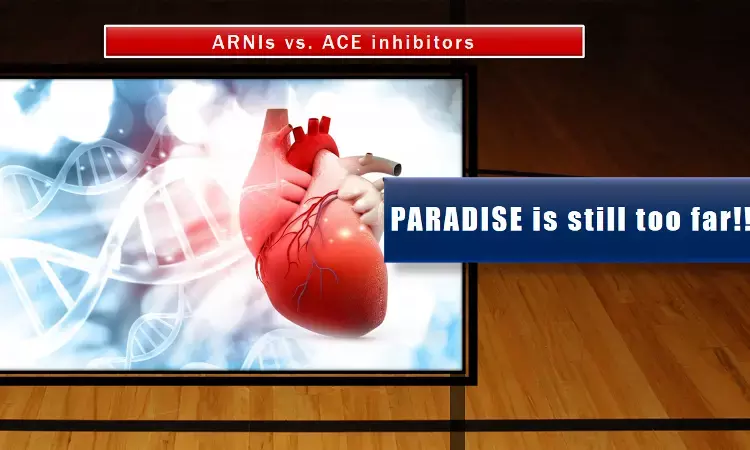- Home
- Medical news & Guidelines
- Anesthesiology
- Cardiology and CTVS
- Critical Care
- Dentistry
- Dermatology
- Diabetes and Endocrinology
- ENT
- Gastroenterology
- Medicine
- Nephrology
- Neurology
- Obstretics-Gynaecology
- Oncology
- Ophthalmology
- Orthopaedics
- Pediatrics-Neonatology
- Psychiatry
- Pulmonology
- Radiology
- Surgery
- Urology
- Laboratory Medicine
- Diet
- Nursing
- Paramedical
- Physiotherapy
- Health news
- Fact Check
- Bone Health Fact Check
- Brain Health Fact Check
- Cancer Related Fact Check
- Child Care Fact Check
- Dental and oral health fact check
- Diabetes and metabolic health fact check
- Diet and Nutrition Fact Check
- Eye and ENT Care Fact Check
- Fitness fact check
- Gut health fact check
- Heart health fact check
- Kidney health fact check
- Medical education fact check
- Men's health fact check
- Respiratory fact check
- Skin and hair care fact check
- Vaccine and Immunization fact check
- Women's health fact check
- AYUSH
- State News
- Andaman and Nicobar Islands
- Andhra Pradesh
- Arunachal Pradesh
- Assam
- Bihar
- Chandigarh
- Chattisgarh
- Dadra and Nagar Haveli
- Daman and Diu
- Delhi
- Goa
- Gujarat
- Haryana
- Himachal Pradesh
- Jammu & Kashmir
- Jharkhand
- Karnataka
- Kerala
- Ladakh
- Lakshadweep
- Madhya Pradesh
- Maharashtra
- Manipur
- Meghalaya
- Mizoram
- Nagaland
- Odisha
- Puducherry
- Punjab
- Rajasthan
- Sikkim
- Tamil Nadu
- Telangana
- Tripura
- Uttar Pradesh
- Uttrakhand
- West Bengal
- Medical Education
- Industry
Sacubitril-Valsartan not superior to Ramipril in acute MI setting, finds PARADISE MI trial

In patients with symptomatic heart failure, sacubitril-valsartan has been found to reduce the risk of hospitalization and death from cardiovascular causes more effectively than an angiotensin-converting–enzyme inhibitor (ACE-I). But the same benefit was not reproduced when both the classes were compared in an acute myocardial infarction (MI) setting by Pfeffer et al.
The results of PARADISE MI trial published today in NEJM have shown that Sacubitril–valsartan is not associated with a significantly lower incidence of death from cardiovascular causes or incident heart failure than ramipril among patients with acute MI.
The landmark PARADIGM-HF showed that sacubitril–valsartan led to better outcomes than an angiotensin-converting–enzyme (ACE) inhibitor in patients with stable NYHA class II or III heart failure with a left ventricular ejection fraction of 0.40 or lower.
In this issue of the NEJM, Pfeffer et al explored whether the benefits of angiotensin receptor–neprilysin inhibition over ACE inhibition would extend back from stable chronic heart failure into the context of acute myocardial infarction.
In this randomized, double-blind, active-controlled trial, authors randomly assigned patients with myocardial infarction complicated by a reduced EF, pulmonary congestion, or both to receive either sacubitril–valsartan (97 mg of sacubitril and 103 mg of valsartan twice daily) or ramipril (5 mg twice daily) in addition to recommended therapy.
The primary outcome was death from cardiovascular causes or incident heart failure (outpatient symptomatic heart failure or heart failure leading to hospitalization), whichever occurred first.
PARADISE-MI did not show a significant benefit of sacubitril–valsartan over the ACE inhibitor ramipril.The primary outcome of death from cardiovascular causes or incident heart failure (defined as hospitalization for heart failure or symptomatic outpatient heart failure) reached a hazard ratio of 0.90 with a P value of 0.17. The hazard ratio for the secondary outcome of heart failure events was 0.84.
Treatment with sacubitril–valsartan was associated with an incidence of hypotension that was 29% higher than that with ramipril. "The findings in PARADISE-MI do not support the use of an angiotensin receptor–neprilysin inhibitor before hospital discharge after an acute myocardial infarction, for which an ACE inhibitor or ARB is the guideline-recommended treatment", mention Stevenson et al in an accompanying editorial.
"In outpatients for whom the left ventricular ejection fraction remains low, a later switch from an ACE inhibitor or ARB to an angiotensin receptor–neprilysin inhibitor is reasonable if blood pressure and medication coverage are robust", adds Stevenson.
Source: NEJM:
1. DOI: 10.1056/NEJMe2115471
2. DOI: 10.1056/NEJMoa2104508
MBBS, MD , DM Cardiology
Dr Abhimanyu Uppal completed his M. B. B. S and M. D. in internal medicine from the SMS Medical College in Jaipur. He got selected for D. M. Cardiology course in the prestigious G. B. Pant Institute, New Delhi in 2017. After completing his D. M. Degree he continues to work as Post DM senior resident in G. B. pant hospital. He is actively involved in various research activities of the department and has assisted and performed a multitude of cardiac procedures under the guidance of esteemed faculty of this Institute. He can be contacted at editorial@medicaldialogues.in.
Dr Kamal Kant Kohli-MBBS, DTCD- a chest specialist with more than 30 years of practice and a flair for writing clinical articles, Dr Kamal Kant Kohli joined Medical Dialogues as a Chief Editor of Medical News. Besides writing articles, as an editor, he proofreads and verifies all the medical content published on Medical Dialogues including those coming from journals, studies,medical conferences,guidelines etc. Email: drkohli@medicaldialogues.in. Contact no. 011-43720751


